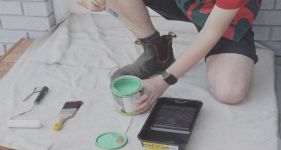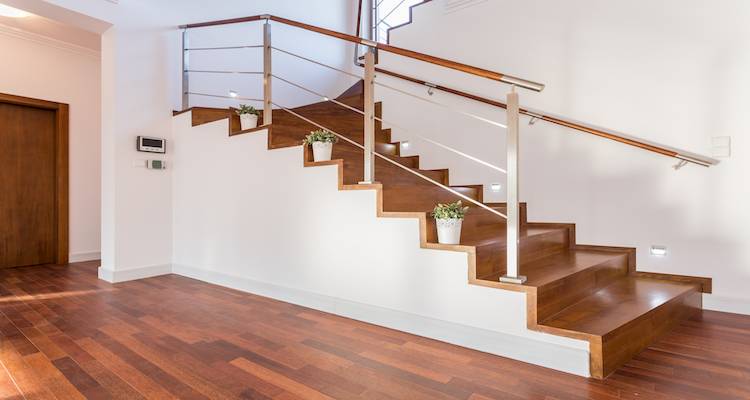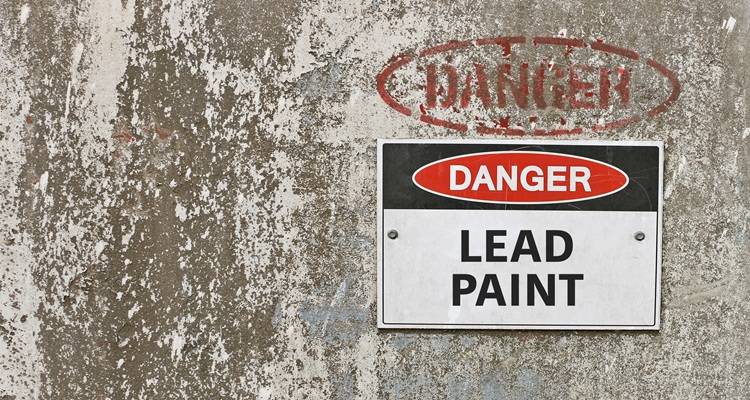How to Paint Skirting Boards
This article explains with the help of images, how to paint skirting board. We explain everything that you might want to know regarding the paint, tools & materials, maintenance and also answer some of the most frequently asked questions.
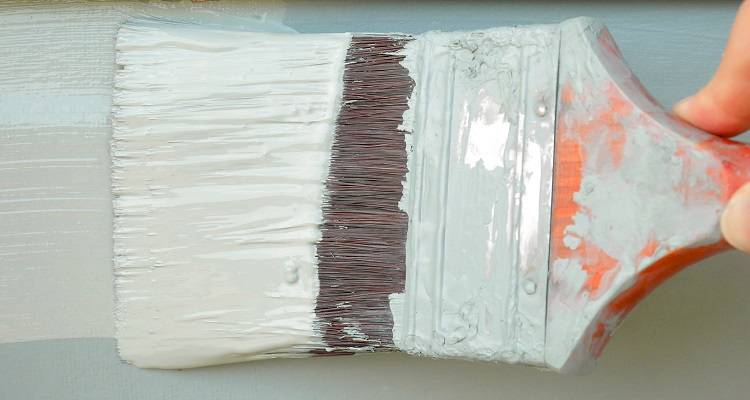
Table of Contents
- What are Skirting Boards for?
- What Tools Do I Need for Painting Skirting Boards?
- What Safety Equipment Do I Need for Painting Skirting Boards?
- What Materials Do I Need for Painting Skirting Boards?
- Preparing for Skirting Boards
- How to Paint Skirting Boards ? Step by Step Guide
- What Is The Best Paint for Skirting Boards?
- Skirting Board Maintenance
- How to Clean Skirting Boards
- FAQs
What are Skirting Boards for?
Skirting boards were originally designed to hide the junction between wall and flooring. Walls have not always been plastered as smooth and level as we have today, so this created a way to have a neater finish to walls, covering up any uneven and unsightly joints.
Skirting boards also act as a protective barrier around the edges of your wall, which can prevent things such as dents and scuffs from shoes and vacuuming. Not only do they have a practical value, but also offer great aesthetic value to your home.
What Tools Do I Need for Painting Skirting Boards?
If you are considering painting your skirting boards, or as part of a wider project such as painting a room, it’s important to be equipped with the correct tools.
We advise you to gather the following tools for the job:
- Sandpaper
- 2-inch paintbrush
- Masking tape
- Brush
- Dustpan
- Vacuum
- Tack cloth
- Dust sheet
What Safety Equipment Do I Need for Painting Skirting Boards?
For any DIY job, it’s always best to proceed with safety measures, and this includes painting your skirting boards. As you will be sanding down the skirting surface, you should take measures to protect your eyes and mouth during the process. For this, we recommend to wear goggles and a dust mask.
It’s also advisable to ventilate the room as much as you can when sanding, so try and leave the windows open, where possible.
As you’ll be spending much of the time working on the floor, knee pads can help add comfort, along with taking regular breaks.
Prior to painting your skirting boards, if you need to remove any old paint, remember to approach with caution - older paints (in particular those from prior to the 1970s) may contain lead which can potentially cause health issues if it isn't removed correctly. If in any doubt, ask a professional painter and decorator for advice.
What Materials Do I Need for Painting Skirting Boards?
As well as being correctly prepared with tools, you will also need the following list of materials in order to carry out the task at hand:
- Gloss paint OR satin paint (the choice is up to you; we will be advising on the best type of paint for your skirting board shortly).
- Wood primer undercoat (if you are painting directly to wood ONLY).
- Masking tape.
- Sugar soap.
Preparing for Skirting Boards
Whether you are painting your skirting boards from scratch or simply giving them a fresh coat of paint, proper preparation is vital in this DIY process.
Before painting, you should always lightly sand your skirting boards. However, it’s best to clean them first to remove any dust or grease. This can be done using sugar soap and a cloth, or with pre-made sugar soap wipes for convenience.
Use sandpaper or a power sander to smooth the surface, removing any old paint, flakes, and scuffs. You should then be left with a nice, even finish. Don’t forget to wear safety goggles and a dust mask, as sanding can get messy.
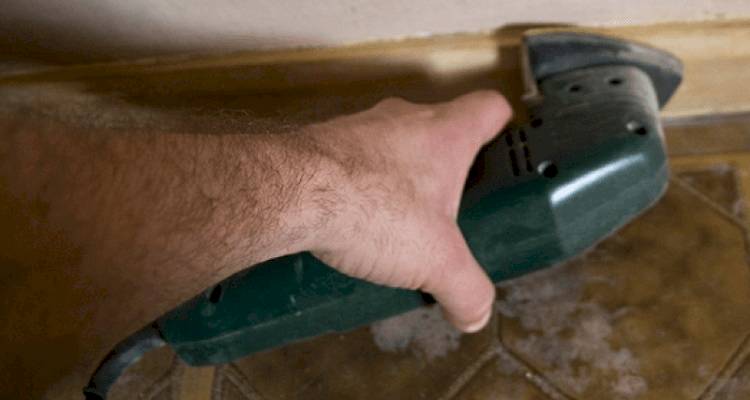
Once you’ve finished sanding, remove the dust created during the process. The best way to do this is with a vacuum cleaner, paying close attention to any small gaps between the skirting and the floor, as well as along the top edge of the skirting.
The surface needs to be as clean as possible before painting. For best results, we recommend wiping it down again with a tack cloth, or you can also use sugar soap and a cloth for this step.
If your skirting boards are made from wood with visible knots, apply a knotting solution to prevent them from seeping through and staining the paint finish. Use a brush or cloth to apply the solution to each knot, allow it to dry, and repeat 2–3 times.
Even when you're replacing skirting with newly installed boards you should still follow the same process.
How to Paint Skirting Boards — Step by Step Guide
After gathering all your tools, materials and paint you are ready to paint your own skirting boards. Below we have broken down in a step by step how-to guide how to paint your skirting board once it is prepared..
Step 1
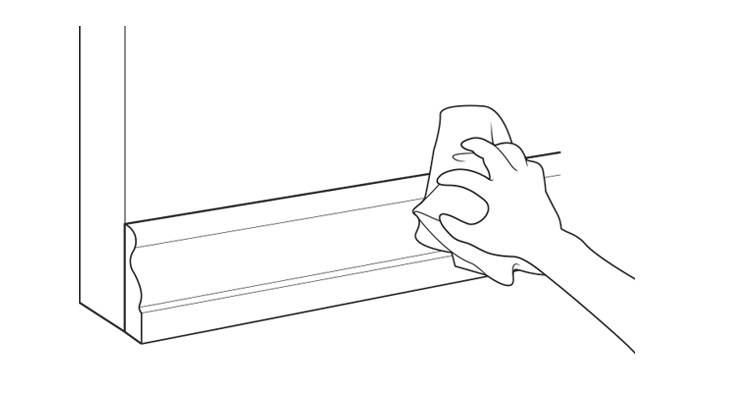
You will need to prepare the surface before painting your skirting board. First, clean your skirting boards with sugar soap and a cloth to remove any residue, dirt and grease.
Step 2
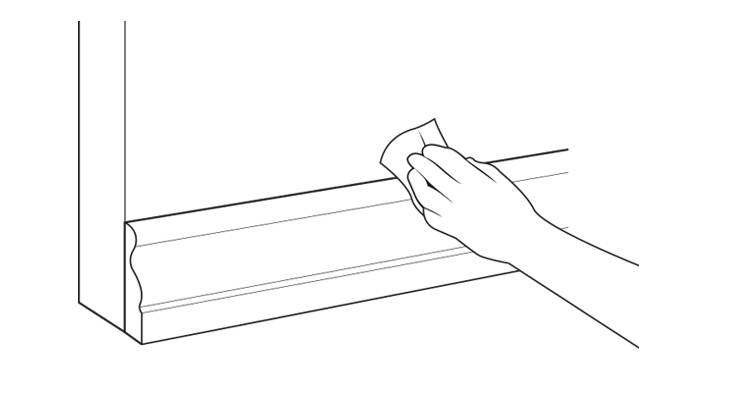
Then using sandpaper, lightly sand your skirting board, this will remove any previous paint and uneven textures from the surface.
Step 3
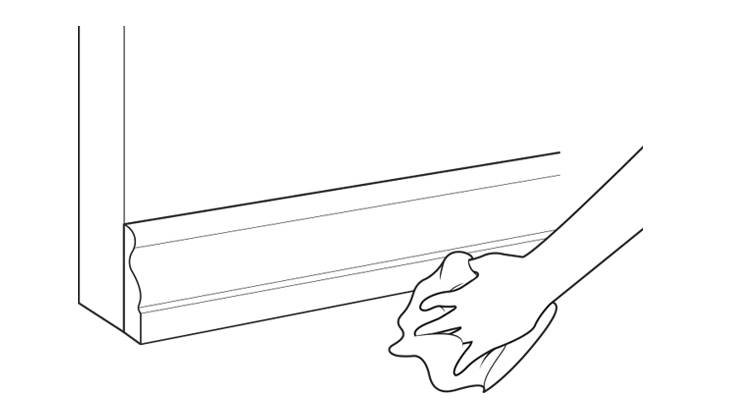
Following this, take your tack cloth and wipe down any excess dust from the boards. You can also use Sugar Soap wipes. You’ll now need to clear the dust on the floor area of the skirting boards, use a dustpan and brush or a vacuum to clear away. It’s important that this area is clean and free from dust, as that could stick to your skirting board surface when you paint.
Step 4
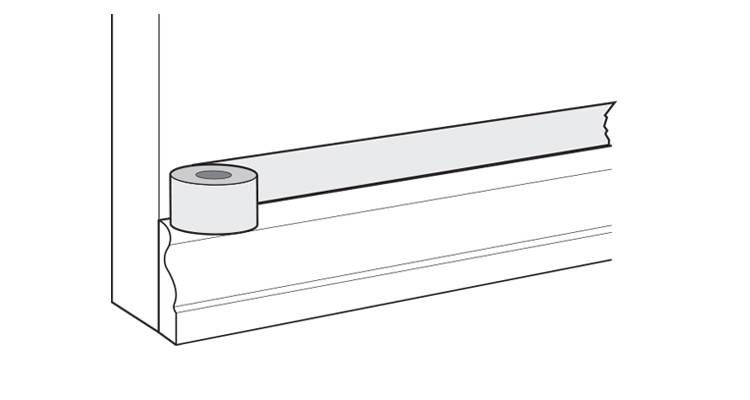
Take your masking tape and follow the top line of your skirting board, apply this to the wall, this will stop any unwanted paint on your wall surface and create a lovely, neat finish to your skirting board.
Step 5
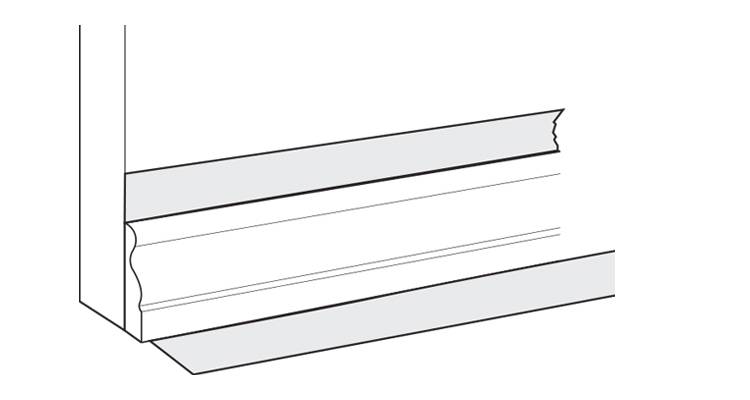
You’ll also need to protect your floor; you can do this with your dust sheet. Cover the surface area of your floor. To secure the sheets down, use your masking tape again and from the base of your skirting board pat down to secure it to the floor surface. Apply the masking tape around all the edges of the board for optimum protection.
Step 6
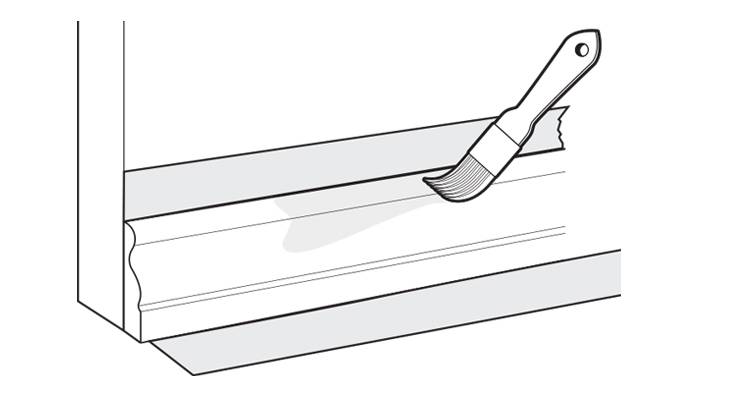
If you are painting directly on to bare wood skirting, or the surface is uneven, we advise that you use a ‘Quick Dry’ undercoat first. Apply this by using a paintbrush, then leave to dry according to the manufacturer’s instructions. After it has dried, you will need to lightly sand the skirting surface and clean away any dust.
Skirting boards that have been painted previously may not need an undercoat. However, it’s recommended to still apply one if the existing layer is oil-based and you’re changing to a water-based paint. Likewise, you should apply an undercoat if you’re going from a dark paint to a lighter one.
Step 7
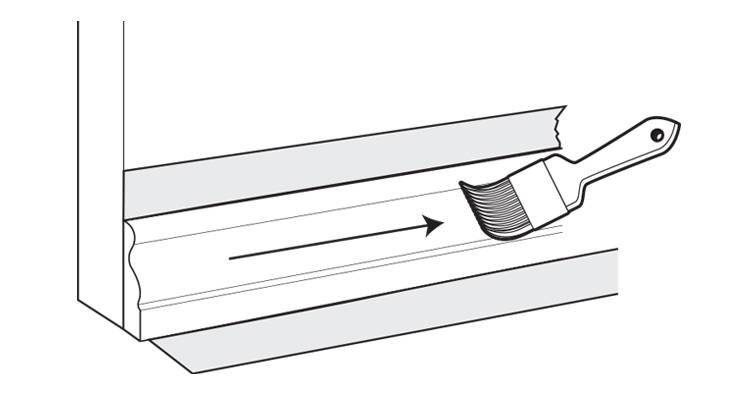
It’s now time to learn how to paint your skirting board. Use a thin brush and apply your chosen gloss or satin paint in long, even strokes, following the grain and working in sections for the best finish. We advise when painting that you follow the direction of the grain, using long strokes, move horizontally across your skirting board, not vertically.
It’s best if you paint in sections to ensure the best possible finish of your boards. Aim to paint the top of your skirting board first, then the bottom. You can then use a slightly wider brush to paint in the remaining area in the middle. Always use long strokes moving in the direction of the wood grain.
Step 8
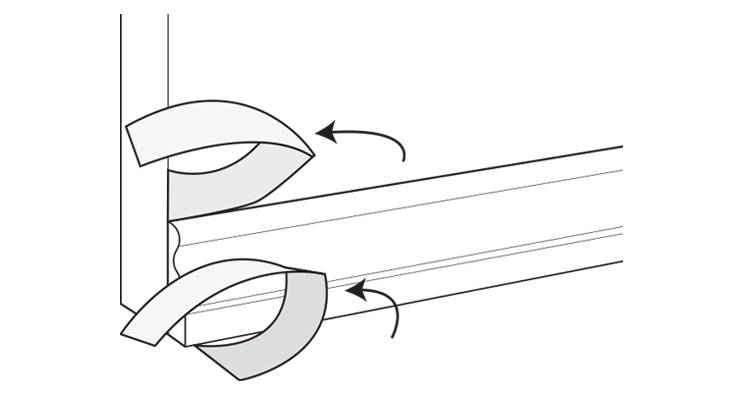
After you have finished painting, carefully remove the masking tape, being careful not to damage the freshly painted surface. It’s vital that you remove the masking tape before the paint has time to dry, as this could set the masking tape to your wall and floor surface, making it highly difficult to remove later. Finally, let the paint dry according to the manufacturer's instructions.
What Is The Best Paint for Skirting Boards?
To help you make an informed decision, we are going to focus on the three most popular types of paint for your skirting board. These are:
Satin Paint For Skirting Boards
Satin paint often compliments bold colours and is a popular choice in contemporary homes.
It offers homeowners a mid-sheen finish, which provides a modern and easy to clean option, with minimal upkeep required as over time this paint keeps true to its original colour.
Gloss Paint For Skirting Boards
Choosing this type of paint, will (as it says on the tin) give you a gloss finish, which will look shiny and reflective. Gloss paint is durable and hardwearing, which is why it is so popular among many households.
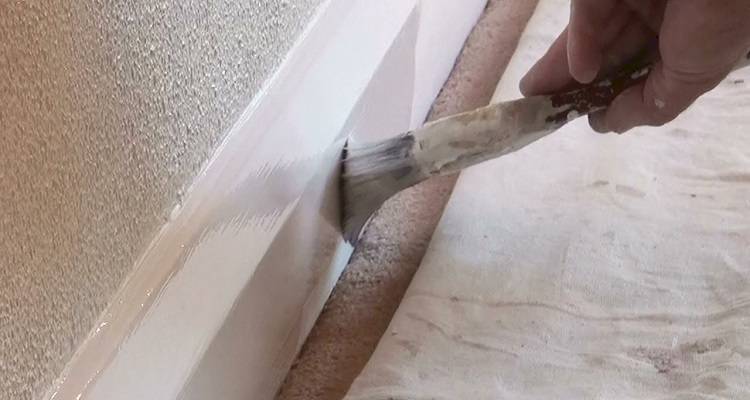
Be aware that gloss paint highlights any imperfections along your skirting board surface, so be sure to dedicate time to sanding preparation before applying this type of paint. When choosing your gloss paint, it’s important that you choose a water-based gloss rather than oil-based. This is because oil-based gloss can discolour over time, which means you’ll need to apply fresh gloss before you know it!
Eggshell Paint For Skirting Boards
This would be a paint designed for the modern skirting board. Choosing eggshell paint will leave you with a pure matt finish, leaving no sign of sheen or gloss in sight.
This type of paint has become hugely popular in recent years as it works well with those looking to produce a ‘shabby chic’ feel to their home. This paint is easy to maintain and is highly durable.
All these paints are easily sourced online and in local paint shops.
If you are still struggling to decide what the best paint for skirting boards is, then we would recommend you go with a satin finish. This way it gives you a good mixture between gloss and matt finish, and you can be sure it will be able to withstand your usual wear and tear.
Skirting Board Maintenance
Like anything in the home, in time it can experience a few bumps and scrapes. Your skirting boards are no exception, whether it’s from foot traffic, children’s toys or the vacuum cleaner, your skirting board will take a few knocks.
It’s essential that you maintain your skirting boards, start with cleaning them regularly as that will help to keep them looking bright, fresh and clean, we will discuss how to clean your skirting boards shortly.
Should you get scuffs or marks, try and use soap and water to remove markings. If the paint on your skirting board comes towards a natural end (paint chips and slight discolouration), then it’s advised that you start the process of repainting your skirting again.
The paint used on your skirting should be durable and long-lasting, with high-quality options lasting up to 10-15 years with proper care before showing any signs of wear.
How to Clean Skirting Boards
As we mentioned before, you will need to keep on top of cleaning your skirting boards to maintain them. It’s surprising how many people neglect to frequently clean these areas of their home.
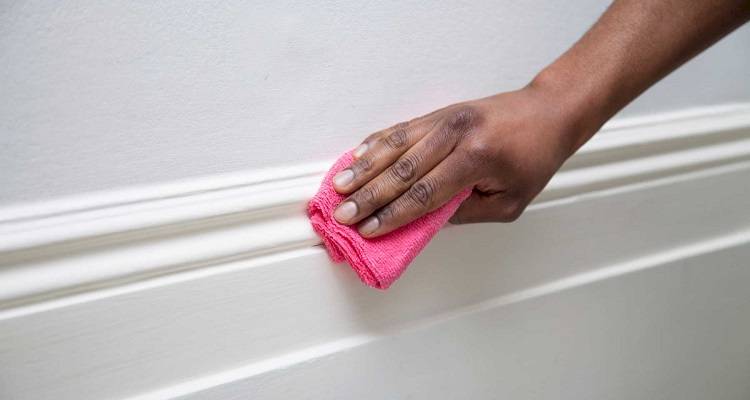
Skirting boards, unfortunately, are magnets for dust, so keeping on top of this as part of your weekly routine will keep the dust at bay.
We recommend beginning the process using your vacuum with a small nozzle attachment at the end, to try and improve chances of moving the dust and the dirt.
You are then able to wipe down your skirting board using warm soapy water and a cloth. Be sure to ring out the cloth to avoid over saturating your wall.
Using Sugar Soap and a cloth on a frequent basis will also help to collect any gathering dust.
Should you have some tougher scuffs, you should use take a cloth and soak this in warm water with vinegar, (use one-part water to one-part vinegar). The acidity in the vinegar breaks down these areas of dirt, making them easier to remove.

